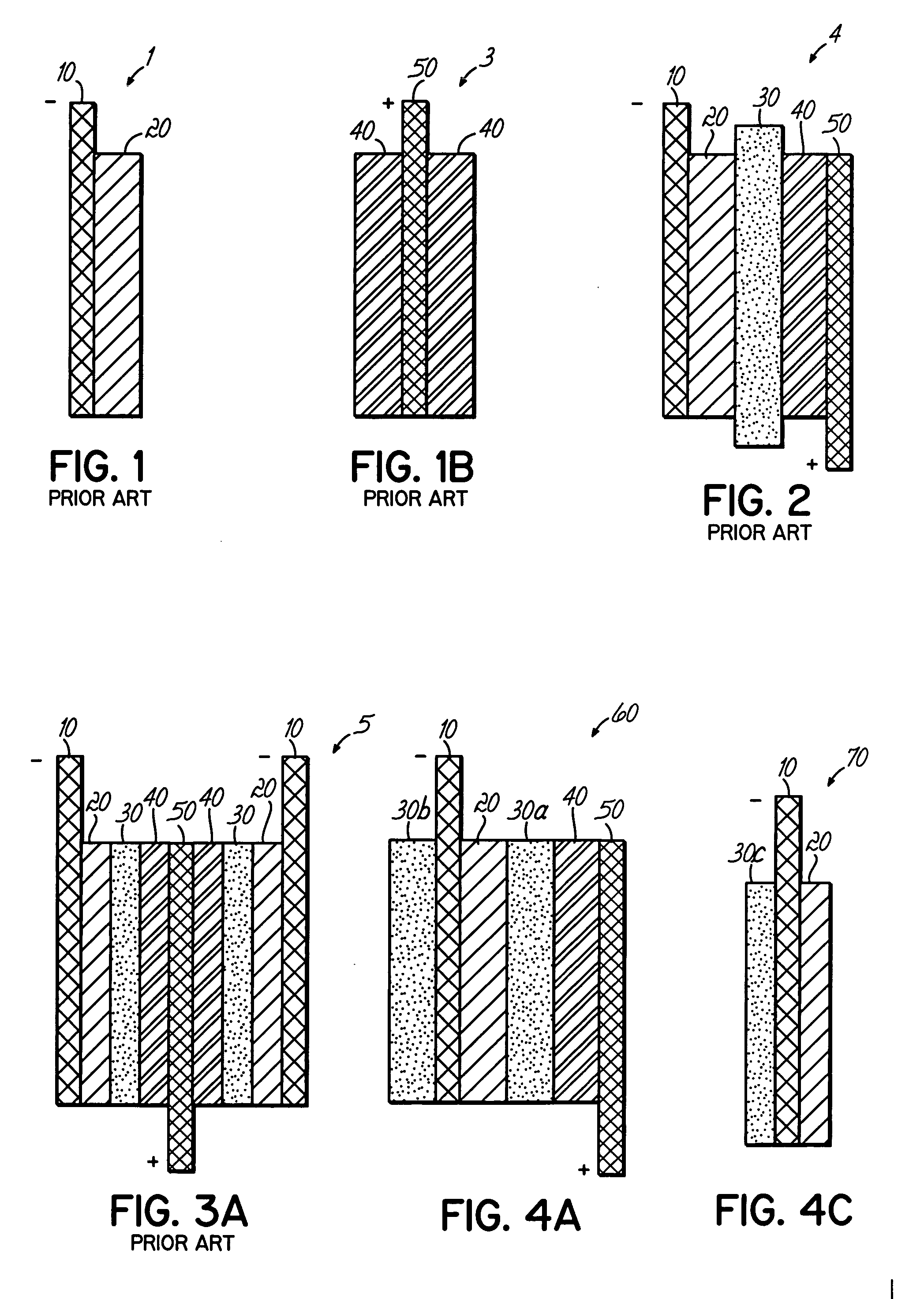Lithium ion polymer multi-cell and method of making
a lithium battery and polymer technology, applied in the field of lithium battery cell configurations, can solve the problems of poor cycle life and calendar life, poor cycle life, poor calendar life,
- Summary
- Abstract
- Description
- Claims
- Application Information
AI Technical Summary
Benefits of technology
Problems solved by technology
Method used
Image
Examples
Embodiment Construction
[0025] A battery multi-cell of the present invention comprises a plurality of laminated cell units, ordered in sequence. Each cell unit has a negative electrode (anode) adhered to a negative electrode current collector, a positive electrode (cathode) adhered to a positive electrode current collector, and a first electrolyte-impregnated separator between them. One or both electrode structures (the anode and / or the cathode) may comprise two or more electrode layers that are separated by an internal current collector. For example, an anode structure may be comprised of two negative electrode layers separated by a negative electrode current collector, and / or the cathode structure may be comprised of two positive electrode layers separated by a positive electrode current collector (as shown in FIG 1B). Alternatively, one or both electrode structures (the anode and / or the cathode) may comprise a single electrode layer and a current collector positioned external to the battery cell (as sho...
PUM
| Property | Measurement | Unit |
|---|---|---|
| capillary pressure | aaaaa | aaaaa |
| pressure | aaaaa | aaaaa |
| external energy | aaaaa | aaaaa |
Abstract
Description
Claims
Application Information
 Login to View More
Login to View More - R&D
- Intellectual Property
- Life Sciences
- Materials
- Tech Scout
- Unparalleled Data Quality
- Higher Quality Content
- 60% Fewer Hallucinations
Browse by: Latest US Patents, China's latest patents, Technical Efficacy Thesaurus, Application Domain, Technology Topic, Popular Technical Reports.
© 2025 PatSnap. All rights reserved.Legal|Privacy policy|Modern Slavery Act Transparency Statement|Sitemap|About US| Contact US: help@patsnap.com



